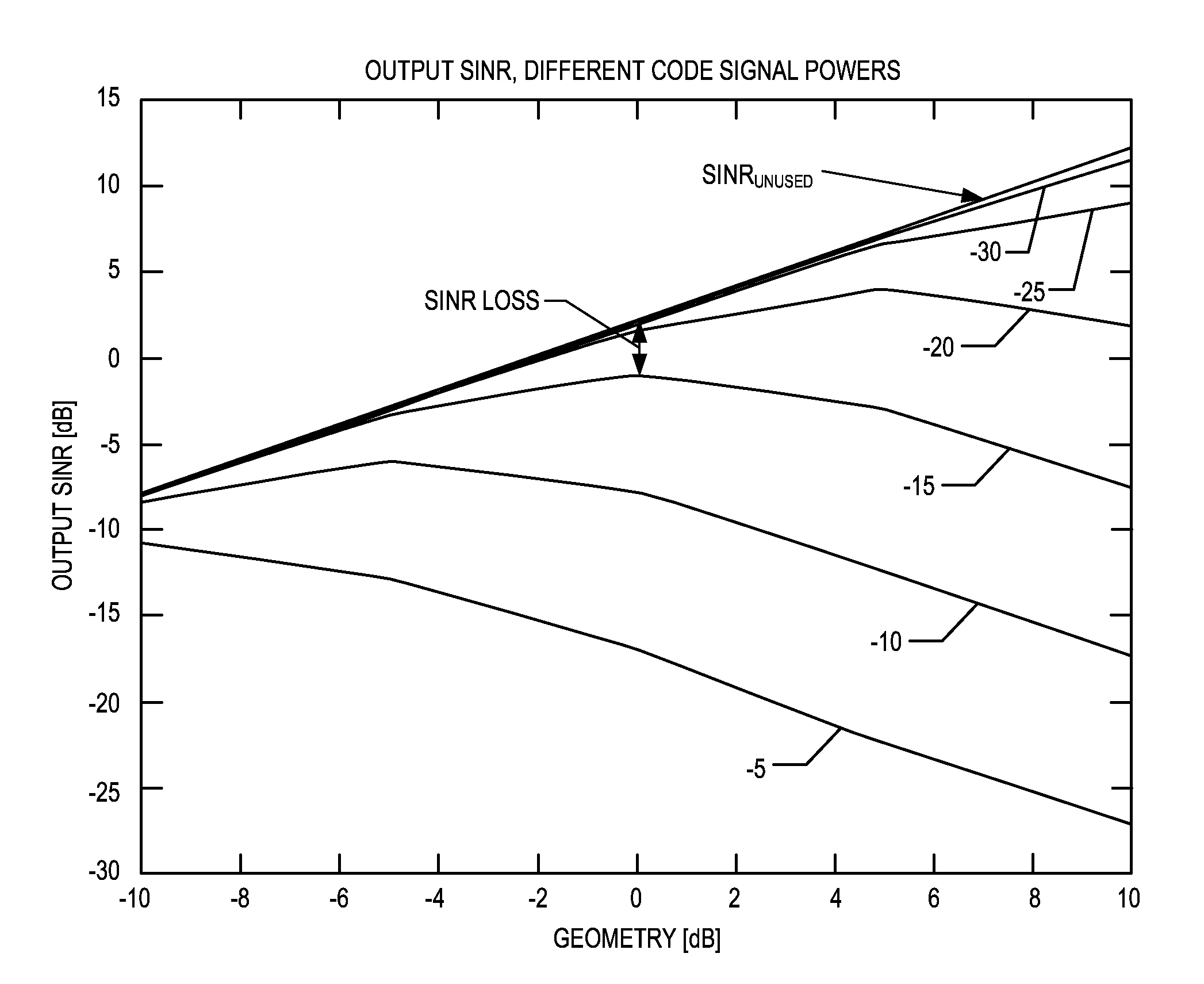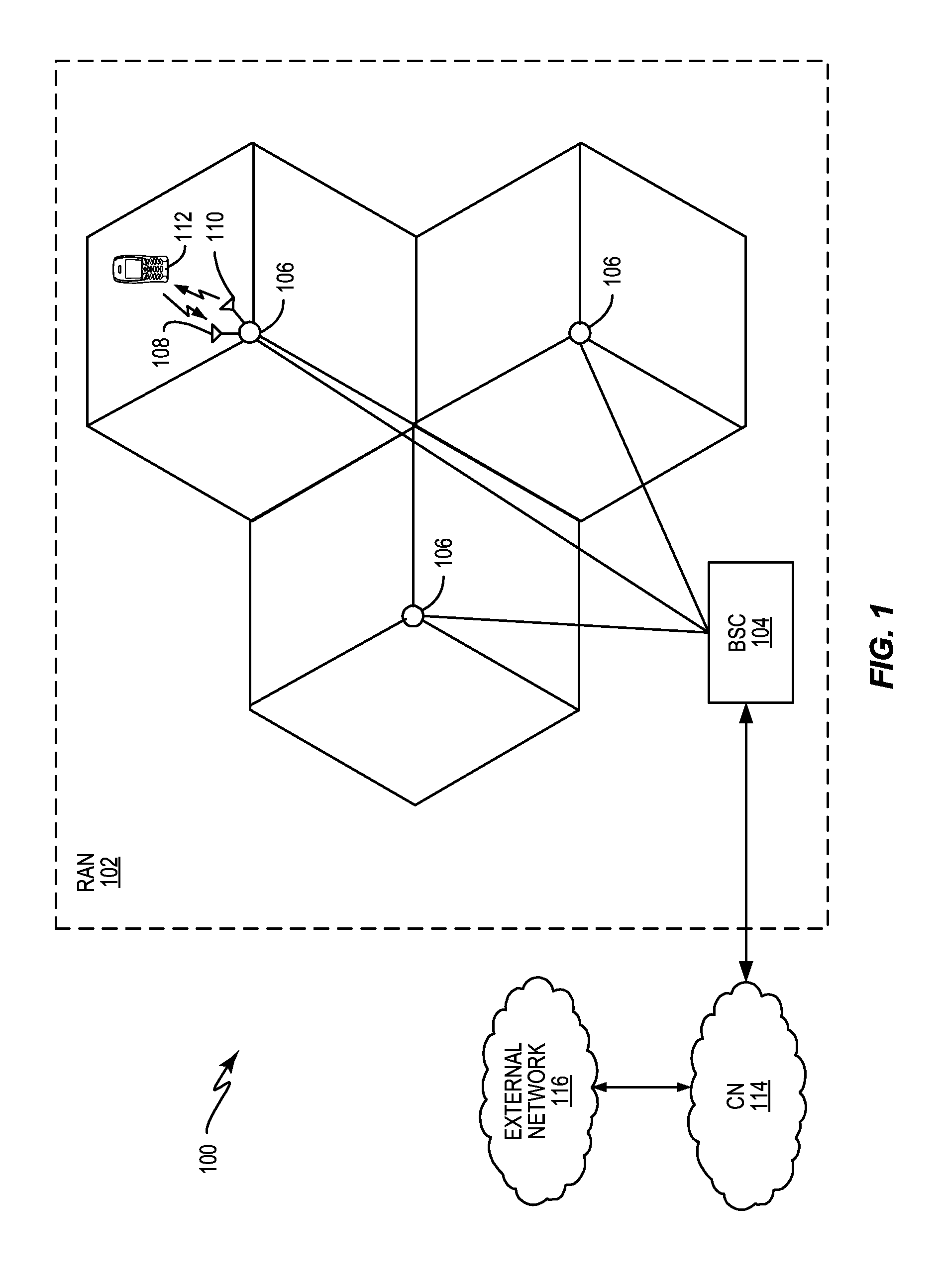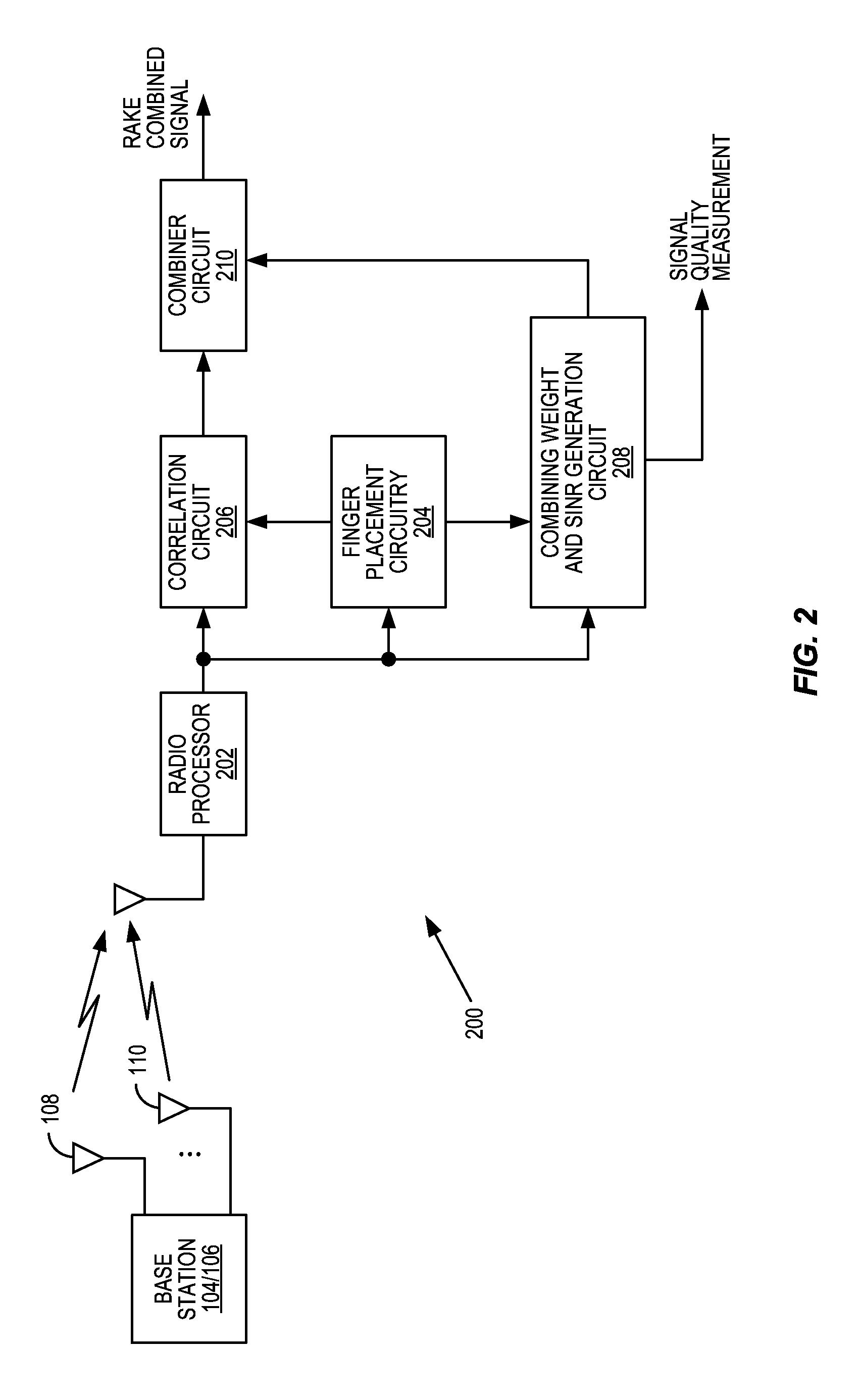Robust, Fast Unused-Code Detection
a technology of unused code and fast detection, applied in the field of wireless receivers, can solve the problems of long observation intervals for hs-pdsch code detection techniques, and achieve the effects of improving the quality of impairment covariance estimation in wireless receivers, avoiding unused code false decisions, and increasing the number of available symbols
- Summary
- Abstract
- Description
- Claims
- Application Information
AI Technical Summary
Benefits of technology
Problems solved by technology
Method used
Image
Examples
Embodiment Construction
[0025]FIG. 1 depicts an example wireless communication system 100. Within a Radio Access Network (RAN) 102, a Base Station Controller (BSC) 104 controls a plurality of Radio Base Stations (RBS) 106, also known in the art as Base Transceiver Stations (BTS). The BSC 104 and an RBS 106 together comprise a “base station” or “NodeB”. Each base station provides radio communication services with subscriber mobile terminals or user equipments (UEs) 112 within a geographic area called a cell. Each cell may be divided into sectors, as depicted in FIG. 1. The BSC 104 communicates with a Core Network (CN) 114, which in turn is connected to one or more external networks 116, such as the Public Switched Telephone Network (PSTN), the Internet, or the like.
[0026]In addition to an information signal, the base station transmits a pilot channel from each transmit antenna 108, 110, in this example of a system employing transmit diversity. The pilot channels comprise a series of pilot symbols. For the p...
PUM
 Login to View More
Login to View More Abstract
Description
Claims
Application Information
 Login to View More
Login to View More - R&D
- Intellectual Property
- Life Sciences
- Materials
- Tech Scout
- Unparalleled Data Quality
- Higher Quality Content
- 60% Fewer Hallucinations
Browse by: Latest US Patents, China's latest patents, Technical Efficacy Thesaurus, Application Domain, Technology Topic, Popular Technical Reports.
© 2025 PatSnap. All rights reserved.Legal|Privacy policy|Modern Slavery Act Transparency Statement|Sitemap|About US| Contact US: help@patsnap.com



